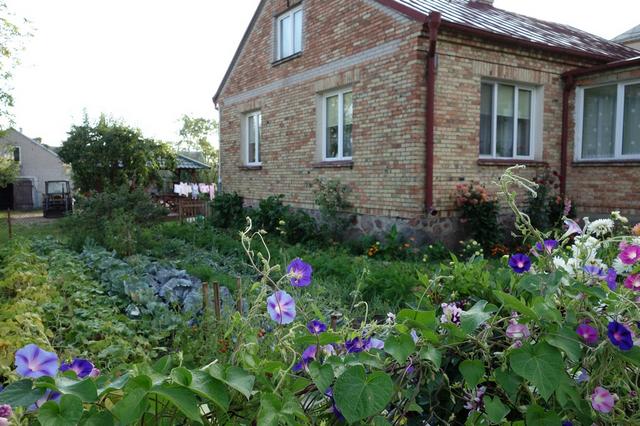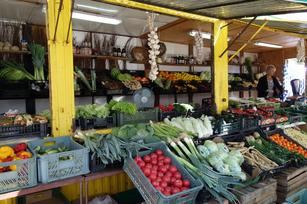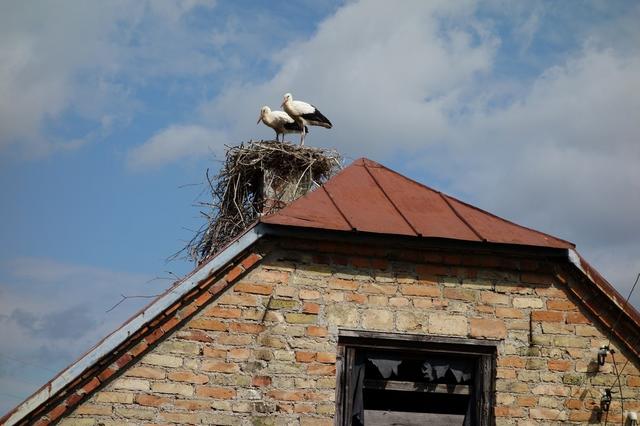 In Poland you greet someone by saying oziendobry which means hello or good day. You hear it at every restaurant and market and even high on a mountain trail. I had a hard time trying to pronounce their Slavic words with so many consonants but used this word daily. So began my adventures to visit the gardens and natural landscapes in Poland earlier this month.
In Poland you greet someone by saying oziendobry which means hello or good day. You hear it at every restaurant and market and even high on a mountain trail. I had a hard time trying to pronounce their Slavic words with so many consonants but used this word daily. So began my adventures to visit the gardens and natural landscapes in Poland earlier this month.
The first thing you notice in Poland are the flowers. Although winters are harsh in this country spring starts suddenly in April after the snow melts. The climate in eastern Poland where I visited is influenced by the interior of the continent towards Russia and so receives summer rain. The wildflowers, vegetable gardens, perennial and annual flowers love the moisture and were in full bloom.
This part of Poland is protected from any industry and a primeval forest and several national parks are here. Agriculture makes up 50% of land use in this country. Even during the Communist control, a farmer was allowed to keep 3 hectares of land for himself. Land ownership provided some freedom  and even to this day little land comes up for sale.
and even to this day little land comes up for sale.
Driving north from Warsaw I saw miles of round hay bales in harvested fields of grain. Lots of farmers were out working their land, some on tractors, some raking the hay into rows by hand. A farmer behind a horse drawn plow worked one field along with his wife. Wheat, rye, barley, potatoes and sugar beets are grown as well as corn for winter silage for cows. Did you know that Belarus red cattle can graze in fields with low nutrient sedges as found in marshes but Dutch black and white ones won't survive on this type of diet?
I couldn't help but fall in love with the neat farm houses made of brick, local multi-colored granite, wood or brightly painted stucco most with a red roof and surrounded by a flower garden, a vegetable garden and always a fence. I've never seem so many kinds of fencing- ornamental iron, willow branches woven together, fancy picket fences or concrete cast to look like wooden bed posts.
The sandy soil here was deposited by glaciers, the last one only 10,000 years ago and is rich with sediment and nutrients. Sunflowers grow tall between fields. Rudbeckia or Black-eyed Susan grow wild covering the hillsides with gold and every garden had hydrangea, petunia, geranium, yellow mullein, scabiosa, canna lily, dahlia, chicory, apple and plum trees, grapes,hollyhock, marigold and sweet peas. I was amazed at the number of annuals that were grown. Marigolds and petunias of all colors and styles are very popular and probably started from seed as I never saw a nursery of any type even in the outdoor markets. Tender perennials are overwintered inside or cuttings taken in the fall.
A typical vegetable garden had rows of cabbage, of course, as well as red beets, several types of potatoes, lettuce, carrots, onion, cauliflower, cucumbers and leeks. Tomatoes are very popular but grown in greenhouses. Even short season, cold tolerant tomato like Early Girl or Stupice are grown inside.
The main difference from our gardens are the White storks that nest on roof tops and electrical  poles. The power company has started to build platforms on top of the poles for the storks to build their nests. Prior to this, stork nests would short out the lines as they added to their heavy nest each year. Poland is home to 25% of the world's storks. These large birds winter in Africa and will leave at the end of August but for now I saw many hundred of the 40.000 pair that nest in Poland.
poles. The power company has started to build platforms on top of the poles for the storks to build their nests. Prior to this, stork nests would short out the lines as they added to their heavy nest each year. Poland is home to 25% of the world's storks. These large birds winter in Africa and will leave at the end of August but for now I saw many hundred of the 40.000 pair that nest in Poland.
Next week I'll tell you about the gardens in southeastern Poland, what to grow around a castle and how to protect your vegetables from wild boar.
